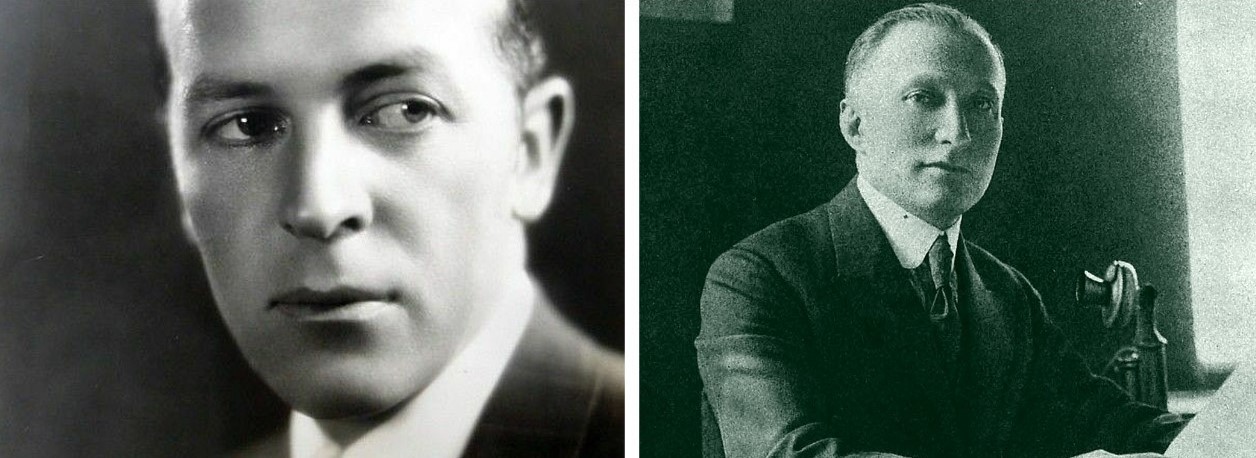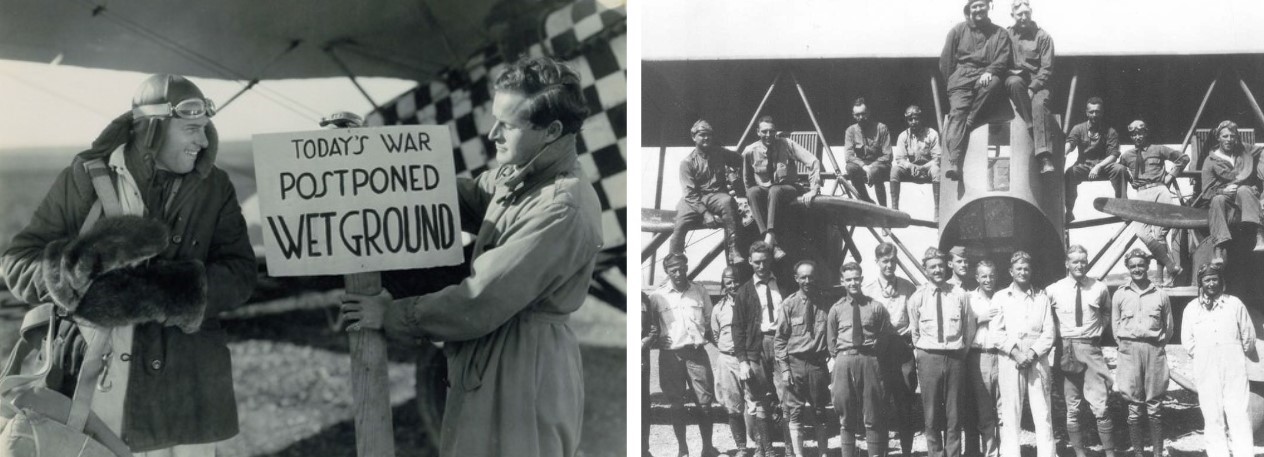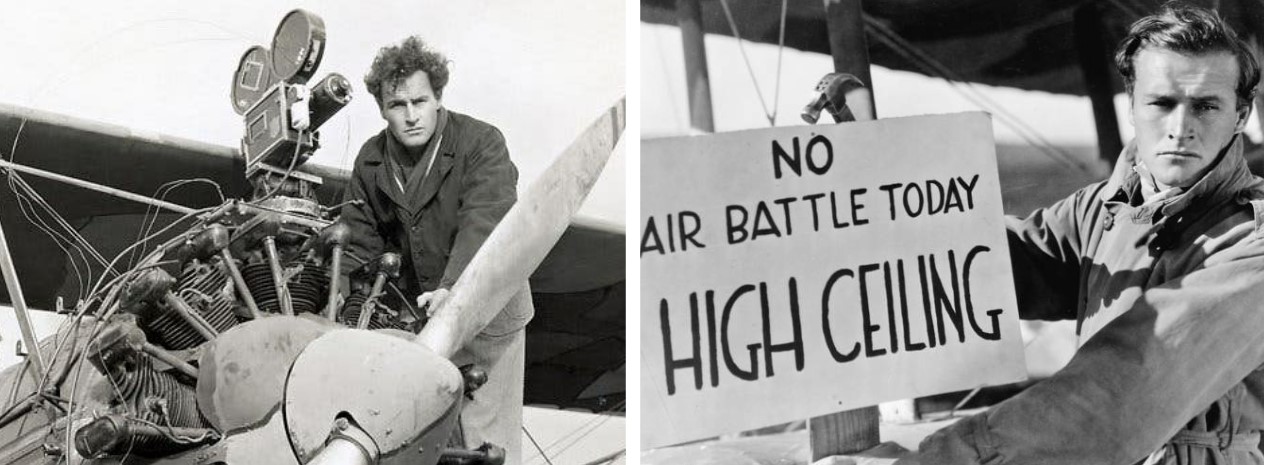Countdown to the Oscars: The Story of the First Ever Best Picture Winner
Wings (1927) was the first ever film to receive the Academy Award for Best Picture. Since then, it has become one of the most acclaimed and influential war dramas, noted for its technical realism and spectacular air-combat sequences. This is the story of how it came to be made.
Part I: A man and his story
The concept for Wings originated from a writer trying to sell one of his stories. In September 1924, Byron Morgan approached Jesse L. Lasky, then the vice-president of Famous Players-Lasky, a component of Paramount Pictures, proposing that the studio do an aviation film. Morgan suggested an «incident and plot» focused on the failure of the American aerial effort during World War I, and the effect that the country's «aviation unpreparedness» would have in upcoming conflicts. Lasky liked Morgan's idea, and approved the project under the working title The Menace.Part II: A new man, a new story, and the War Department
Meanwhile, The Big Parade (1925), a World War I drama directed by King Vidor and starring John Gilbert, became a great critical and commercial success. After seeing the film five times, Morgan wrote to Lasky saying he was «more convinced that ever that there is a great picture to be made around the air service during the war.» He thought The Menace could be as great as The Big Parade, and added that director Sam Wood was «more than enthusiastic about the possibilities it offers.»In February 1926, another writer, John Monk Saunders, presented Lasky with his own idea for a World War I aviation movie, pointing out that Hollywood still had not filmed «the war-in-the-air.» Lasky liked the picture Saunders described, but expressed concern about the cost. Since Saunders knew about the military assistance extended to The Big Parade, he felt that the War Department would also provide men and equipment to make an Army Air Service picture. Lasky said that if the military agreed to put up some of the necessary supplies, he would commit the full resources of the studio to the production of the film.
 |
| (from left to right) John Monk Saunders (1897-1940); Adolph Zukor (1873-1976). |
Part III: The final script and a director is hired
In the months that followed the project's approval, married screenwriters Hope Loring and Louis D. Lighton were brought in to develop a script based on Saunders's original story. Morgan contributed some of his own story ideas, but he was uncredited on screen.
Wings, as the film was renamed, followed two young men, Jack Powell and David Armstrong, who enlist in the Army Air Service just as the United States enters World War I. They became close friends and, upon graduating, they are both shipped off to the Western Front to fight against Imperial Germany. During the Battle of Saint-Mihiel, David is shot down and presumed dead. However, he survives the crash landing, steals a German biplane, and heads to the Allied lines. Jack spots the enemy aircraft and begins an attack, intent on avenging his friend's death. He successfully downs the plane, not realizing David is the pilot. Just before he dies, David forgives Jack, who returns home after the war to a hero's welcome.

Hope Loring and Louis D. Lighton are credited with writing the final script for Wings.
In World War I, Wellman joined the American Volunteer Motor Ambulance Corps to serve as a driver in Europe. While in Paris, he joined the French Foreign Legion and was assigned in December 1917 as a fighter pilot to the Lafayette Flying Corps. In March 1918, he was shot down by German anti-aircraft fire and the resulting injuries left him with a pronounced limp for the rest of his life. After being medically discharged from the Foreign Legion, he returned to the United States and soon found work as an actor and director in Hollywood. Some time in late 1925, Schulberg signed Wellman to a contract and brought him to Paramount.
Part IV: The cast is assembled and filming begins
To play the two young pilots in Wings, named Jack Powell and David Armstrong, Paramount cast Charles «Buddy» Rogers and Richard Arlen. Like Wellman and Saunders, Arlen was a World War I veteran, having served in Canada as a pilot in the Royal Flying Corps.
The cast also included El Brendel as Herman Schwimpf, a German-American whose patriotism is questioned when he joins the Army Air Service, and Jobyna Ralston as Sylvia Lewis, a pretty girl with whom both Jack and David are in love. Ralston and Arlen began a romance during the making of Wings and got married when the film finished shooting. The union produced a son, but ended in divorce in 1946.
From the start, Wellman got along with the Air Corps and their officers, but he frequently conflicted with the Army personnel that the War Department had brought in to supervise the picture. He explained,
«We had the Army too, thousands of them, infantry, artillery, the works, and in command a general who had two monumental hatreds: flyers and movie people.»
While the flying and technical aspects of the picture went smoothly, the shooting of the aerial scenes dragged on for most of the company's stay in Texas. Because the air battles required ideal weather to film, they once had to wait 18 consecutive days for the sky to clear. The early flying footage shot on cloudless days had lacked visual excitement since the scenes had no background that would enhance the plane's movement. Wellman explained,
«Motion on the screen is a relative thing. A horse runs on the ground or leaps over fences or streams. We know he is going rapidly because of his relation to the immobile ground.»
Eventually, Wellman realized that he could get the proper sense of height and speed by shooting the planes in front of or above the cloud banks. According to the director, this new technique allowed them the realism the battle sequences required. As Wellman described,
«Against the clouds we could see the planes dart at each other. We could see them swoop down and disappear in the clouds. We could sense the plummet-like drop of a disabled plane.»
 |
| (from left to right) Richard Arlen and William A. Wellman on location; the production crew of Wings in front of a Martin MB-2 bomber in 1926. |
 |
| (from left to right) The trench complex built at Camp Stanley; one of the low-level air battle scenes in Wings, also filmed at Camp Stanley. |
As shooting dragged on from month to month, the predominantly male cast and crew had a lot of idle time between shooting sequences, and nowhere to waste it. Wellman recalled,
«San Antonio became the Armageddon of a magnificent sexual Donnybrook.»
The company stayed at the Saint Anthony Hotel for nine months and, according to the director, by the time they left all the elevator girls had become pregnant. Wellman also stated that Bow openly flirted with the male cast members and some of the pilots, despite being engaged to Victor Fleming.
During the making of Wings, Arlen, Rogers and Cooper formed a close friendship. According to Rogers, the three of them were very anxious about the transition to sound pictures and
«made a pact to protect one of us that we figured would turn out not to have a voice; the other two would give him a certain segment of our salaries until he could find something else to do.»
Part V: Filming ends and Wings is released
Whereas most Hollywood productions at the time took about a month to shoot, Wings took around nine months to complete, with an astronomical budget of $2 million. The delays in filming and the expanding cost of production were points of constant concern for Paramount. At one point, the studio sent an executive to San Antonio to complain to Wellman, who swiftly gave the man two alternatives: «a trip home or a trip to the hospital.» Shooting finally finished in April 1927 and Wellman spent another six weeks editing the picture and preparing it for theatrical release.Wings was an instant success upon release, running for a year and a half in New York City and six months in Los Angeles. The Army Air Corps was satisfied with the final product, and critics praised its realism and technical prowess, despite the superficial plot and sentimental ending. One reviewer wrote,
«Nothing in line of war pictures has ever packed a greater proportion of real thrills into an equal footage. As a spectacle, Wings is a technical triumph. It piles punch upon punch until the spectator is almost nervously exhausted.»
Part VI: The 1st Academy Awards and the aftermath
Although most of these films were successful, both critically and financially, none of them managed to reach «the artistry, technique, or excellence» of their predecessor. Contrary to all expectations, Wings became «the yardstick against which all future combat spectaculars have had to be measured in terms of authenticity of combat and scope of production.»
_______________________________________
SOURCES:
Clara Bow: Runnin' Wild by David Stenn (Cooper Square Press, 2000)
Gary Cooper: American Hero by Jeffrey Meyers (Cooper Press Square, 2001)
Guts & Glory: The Making of the American Military Image in Film by Lawrence H. Suid (The University Press of Kentucky, 2002)
The Man and His Wings: William A. Wellman and the Making of the First Best Picture by William A. Wellman Jr. (Praeger, 2006)














Comments
Post a Comment